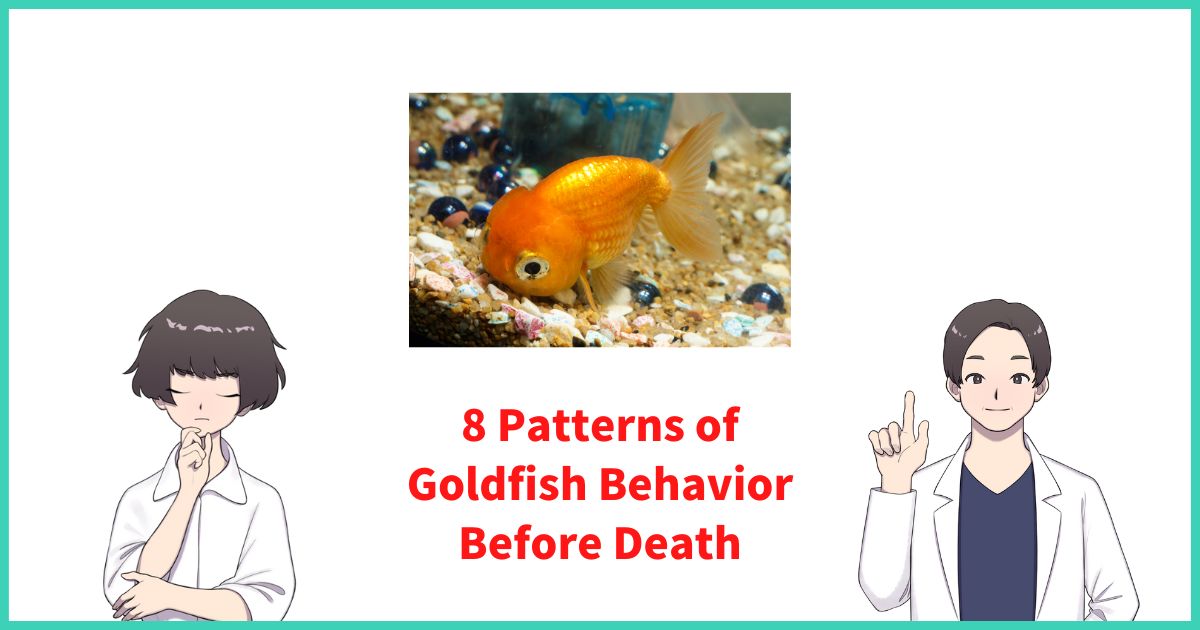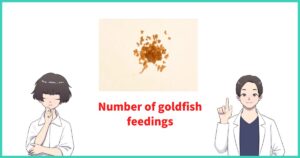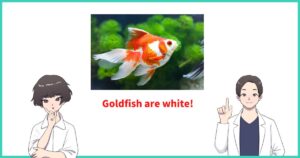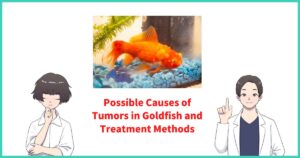Signs that a goldfish is about to die include thrashing while swimming, staying still and not moving, and lack of energy. These signs of impending death often allow for the identification of the underlying causes that trigger death.
The lifespan of goldfish varies, with many varieties typically living for 5 to 10 years. While some individuals may have inherently weak bodies and die after around 2 years, understanding the signs that indicate “if left unchecked, this is a sign of impending death” may help avoid sudden goldfish deaths and increase survival rates.
This article explains the signs of a goldfish’s impending death through 8 patterns, so if you’re looking for answers on whether your goldfish will die or if there are ways to prevent it, consider referring to this information.
Eight signs that a goldfish is about to die.
Thrashing due to pH Shock
Large water changes that cause fluctuations in water quality and temperature can be a significant source of stress for goldfish. Changing too much water at once can cause pH shock or temperature shock, which may lead to death.
If you’ve witnessed a goldfish thrashing before dying, it’s possible that you observed the fish suffering and dying due to pH shock caused by excessive water changes.
When performing water changes, replace about 1/3 of the tank water with new water at a time, and ensure that there is no temperature difference between the new and the existing water.
Decreased Activity Level
As a goldfish approaches death, its normal activity level significantly decreases. This includes slowed swimming speed and increased hiding behavior. Reduced activity is a sign of aging or poor health. If this is accompanied by a lack of appetite and no visible signs of illness, it may indicate that the fish is nearing the end of its life.
Eating Less Than Before
Healthy goldfish are typically voracious eaters, but illness or stress can cause a loss of appetite. Additionally, weakened goldfish nearing death will gradually stop eating. If a goldfish doesn’t eat when offered food, it’s best not to leave the food in the tank. To prevent water quality deterioration, remove the uneaten food after some time.
Increased Breathing at the Water Surface
Some goldfish nearing death may have difficulty breathing properly.
In this case, if the cause is not age-related and the goldfish frequently breathes at the water surface, it is often a sign of oxygen deficiency or poor water quality. When the gill movement is rapid, it is likely due to poor water quality, indicating that the fish is on the verge of death. Environmental improvements such as water changes, increased aeration, and the use of appropriate filtration are necessary.
Frequently Sinking to the Bottom
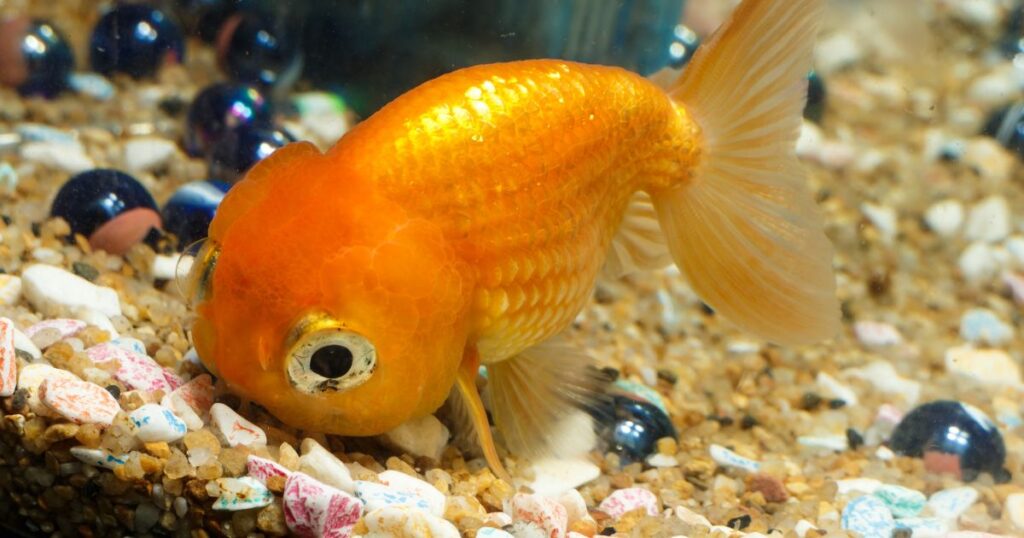
If an otherwise active goldfish starts spending more time at the bottom of the tank, it may be a sign of illness or reduced activity due to low water temperature.
If the water temperature is within the appropriate range for goldfish and the fish still frequently sinks to the bottom, the possibility of weakness due to digestive issues or internal organ diseases cannot be ruled out. Check if you are overfeeding and, if so, reduce the amount of food or consider fasting the fish for a period to observe its recovery.
If there are no issues with water temperature or feeding amount and the goldfish has been kept for more than 5 years, it may be due to aging.
Fading or Changing Body Color
Fading or abnormal changes in a goldfish’s color are clear signs of illness or stress. In particular, white spots or cloudy eyes may indicate white spot disease, saprolegniasis, or other fungal infections.
If the coloration is simply poor, it may be a sign of extreme stress. If the color fades without any environmental changes, it may be due to deteriorating water quality, necessitating water testing and water changes as needed.
If a goldfish’s body turns black, it may be a sign of recovery from diseases such as saprolegniasis. Raising the water temperature and providing a stress-free environment can help restore the fish’s color.
Protruding Eyes
Eye protrusion is usually caused by a disease triggered by an increase in internal pressure due to stress factors such as water quality deterioration, lowered immunity, and infection with Aeromonas bacteria. This condition is called “popeye” and is characterized by a lack of established treatment methods.
While medicated baths using Green F Gold granules or Kanpara D may lead to improvement, goldfish with advanced popeye often die. The main causes of death are often excessive damage from poor water quality or failure to improve the environment thereafter.
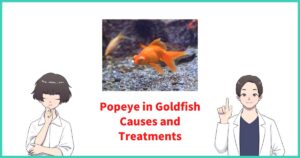
Changes in Fin Condition
Deterioration of fin condition can be caused by fighting or bullying among goldfish or the onset of fin rot due to poor water quality. If fighting or bullying escalates, it can lead to stress-induced death.
Moreover, while fin rot is often considered a mild disease, if left untreated and the infection spreads to the gills, it can cause respiratory distress and potentially lead to death, so it should not be taken lightly.

